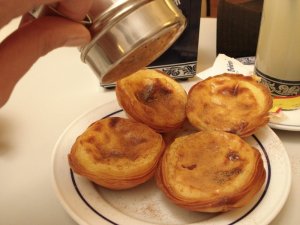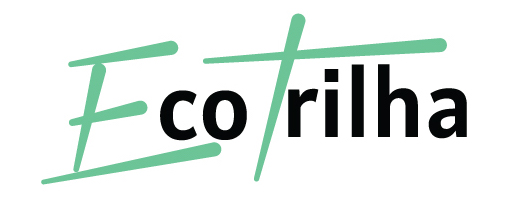Eat like a local in Portugal
 How to Eat Out Like a Local in Portugal
How to Eat Out Like a Local in Portugal
Are you gearing up for an unforgettable trip to Portugal? If you’re eager to dive deep into the heart of Portuguese culture and savor its culinary delights, you’re in for a treat! Join me on a flavorful journey as we explore how to eat like a local in Portugal, from traditional breakfast habits to the best ways to order coffee. Whether you’re a foodie or simply curious about local cuisine, this guide will equip you with everything you need to know.
Discovering Portugal’s Breakfast Culture
What Do Portuguese Eat for Breakfast?
If you’re wondering what the typical breakfast in Portugal looks like, you might be in for a surprise. Unlike the hearty breakfasts featuring eggs and bacon that you might find in other countries, a typical Portuguese breakfast is simple yet satisfying. It often includes a fresh piece of bread, paired with butter or jam, and a hot cup of coffee with milk—known as meia de leite. Some people might also enjoy a freshly squeezed orange juice or a glass of milk. This breakfast routine reflects the Portuguese preference for light and quick morning meals.
However, if you’re staying at a hotel, you’ll likely have the option of a more elaborate breakfast spread. Most hotels in Portugal offer a Continental Breakfast, which includes eggs, bacon, tomatoes, yogurt, fruits, and, of course, a selection of bread and pastries. This is perfect for travelers who want to start their day with a more substantial meal.
Portuguese Breakfast Foods You Must Try
While breakfast in Portugal might seem modest, it’s packed with flavor, thanks to the country’s incredible range of pastries and bread. Here are some breakfast foods you shouldn’t miss:
- Pão de Deus (God’s Bread): A sweet and fluffy roll topped with coconut, perfect for those who enjoy a sweet start to their day.
- Tosta Mista: A popular breakfast option that consists of a toasted ham and cheese sandwich, often enjoyed with a coffee.
- Queijada de Sintra: A small cheese tart with a hint of cinnamon, originating from the town of Sintra. It’s a delicious blend of sweet and savory.
The Quintessential Portuguese Coffee Experience
Coffee Culture in Portugal: What to Expect
Coffee is more than just a beverage in Portugal—it’s a way of life. The Portuguese have mastered the art of coffee, and enjoying a cup is an experience that goes beyond taste. It’s about taking a moment to relax, socialize, and indulge in a beloved tradition. Whether you’re visiting a local café or a bakery, you’ll find that coffee is a staple part of the Portuguese day, especially during breakfast.
How to Order Coffee in Portugal
 When it comes to ordering coffee in Portugal, you’ll find there are several types to choose from. Knowing how to order coffee in Portuguese will not only enhance your experience but also make you feel like a true local. Here’s a guide to help you navigate the most common options:
When it comes to ordering coffee in Portugal, you’ll find there are several types to choose from. Knowing how to order coffee in Portuguese will not only enhance your experience but also make you feel like a true local. Here’s a guide to help you navigate the most common options:
- Café/Bica: A strong espresso, known as bica in Lisbon and cimbalino in the North. It’s the go-to coffee for many locals.
- Meia de Leite: Half coffee, half milk, served in a cup with a handle. It’s similar to a latte but less milky.
- Galão: A latte served in a tall glass, with about 3/4 milk and 1/4 coffee. It’s perfect for those who prefer a milder coffee.
- Pingo/Garoto: An espresso with a splash of milk, ideal if you like a little creaminess in your coffee.
- Café Americano/Abatanado: If you prefer a weaker coffee, this is the Portuguese version of a diluted espresso, similar to what you might call an Americano elsewhere.
- Descafeinado: Decaf coffee, for those who want the flavor without the caffeine.
Portuguese Coffee Brands to Try
If you’re a coffee lover, don’t miss the chance to try some of the best Portuguese coffee brands. Some popular names include Delta and Nicola. These brands are well-known across the country and offer a variety of coffee options, from espresso to ground coffee, that you can enjoy both at home and in local cafes.
The Allure of Portuguese Pastries
Traditional Portuguese Pastries You Must Try
One of the highlights of visiting Portugal is indulging in its array of traditional pastries. These sweet treats are perfect for breakfast or a mid-morning snack often enjoyed with a cup of coffee. Here’s a list of some must-try Portuguese pastries:
- Pastel de Nata: The iconic Portuguese custard tart, with a flaky crust and creamy filling. It’s best enjoyed fresh from the oven with a sprinkle of cinnamon and powdered sugar.
- Travesseiro: This pastry, shaped like a pillow, hails from Sintra and is filled with rich almond and egg cream. It’s a delightful blend of textures and flavors.
- Bola de Berlim: The Portuguese take on a doughnut, filled with creme patissiere. It’s commonly sold by vendors on the beach during the summer months.
- Pão de Ló: A light and airy sponge cake, often served during Easter. It has various regional variations, each with its own unique twist.
- Queijada de Sintra: As mentioned earlier, this small cheese tart is a must-try for its rich history and unique flavor.
The History Behind Portugal’s Famous Pastries
Understanding the history behind these pastries adds an extra layer of appreciation when you take your first bite. For instance, the Pastel de Nata was created by monks at the Jeronimos Monastery in Lisbon in the 18th century. They used egg whites to starch their clothes, which left them with an abundance of egg yolks. Rather than let them go to waste, they began baking these delicious custard tarts—a recipe that remains a closely guarded secret to this day.
Similarly, the Queijada de Sintra has its roots in medieval times, where it was used as a form of payment. This pastry showcases the region’s rich dairy tradition and the abundance of fresh cheese.
Embracing Portuguese Food Culture Beyond Breakfast
Lunch and Dinner: What Do Portuguese People Eat?
While breakfast in Portugal is simple, lunch and dinner are where the real culinary magic happens. Portuguese cuisine is hearty, flavorful, and deeply rooted in the country’s history and geography. Here’s a glimpse of what you might find on the menu for these meals:
- Bacalhau à Brás: A beloved dish made with shredded salted cod, onions, and thinly sliced fried potatoes, all bound together with scrambled eggs.
- Caldo Verde: A traditional soup made with kale, potatoes, chorizo, and garlic. It’s a comforting dish, especially during the cooler months.
- Francesinha: A hearty sandwich from Porto, filled with various meats, covered in melted cheese, and smothered in a rich tomato and beer sauce.
- Arroz de Marisco: A seafood rice dish, similar to paella, but with a Portuguese twist. It’s packed with shrimp, clams, and other fresh seafood.
How to Order Food in Portuguese
To truly eat like a local, it’s helpful to know a few phrases for ordering food. Here are some basics to get you started:
- “Quero uma mesa para dois, por favor.” (I would like a table for two, please.)
- “O que recomenda?” (What do you recommend?)
- “Vou querer…” (I would like…)
- “A conta, por favor.” (The bill, please.)
Knowing these phrases will not only make ordering easier but also show the locals that you’re making an effort to embrace their language and culture.
 Top Portuguese Bread to Know and Try
Top Portuguese Bread to Know and Try
Bread is a staple in Portuguese cuisine, often served at every meal. The variety of bread in Portugal is astounding, with different regions offering their specialties. Here are some types of Portuguese bread you should try:
- Pão Alentejano: A dense and crusty bread from the Alentejo region, often used in traditional dishes like açorda (bread soup).
- Broa de Milho: A yellowish cornbread, common in the North of Portugal. It’s slightly sweet and pairs well with soups and stews.
- Pão de Centeio: A dark rye bread, rich in fiber and full of flavor. It’s perfect for making hearty sandwiches.
A Culinary Adventure Awaits
Join a Culinary Tour in Portugal
If reading about these delicious foods has sparked your appetite, why not take your experience to the next level? Consider joining a culinary tour in Portugal, where you can dive deep into the country’s food culture. These tours often include market visits, cooking classes, and wine tastings, giving you a hands-on experience of what it truly means to eat like a local in Portugal.
You’ll get the chance to learn how to make traditional dishes, visit local producers, and, of course, enjoy plenty of tasting opportunities. It’s the perfect way to immerse yourself in Portuguese culture and bring home some new culinary skills.
Why Book a Culinary Vacation in Portugal?
Booking a culinary vacation in Portugal is more than just a food tour—it’s an opportunity to connect with the country’s rich history and traditions. You’ll explore beautiful landscapes, meet passionate chefs, and taste the flavors that make Portuguese cuisine so unique. Plus, with small group sizes, you’ll enjoy a personalized experience that allows you to fully engage with the culture.
Savoring Every Moment
Eating like a local in Portugal is about more than just food—it’s about savoring the entire experience. From the first sip of your morning coffee to the last bite of your evening meal, every moment is an opportunity to connect with the rich culinary heritage of this vibrant country. So, whether you’re planning a trip to Portugal or simply want to bring a taste of it into your home, embrace the flavors, traditions, and hospitality that make Portuguese cuisine so special.
Start your day with a typical Portuguese breakfast, indulge in a midday pastry, and enjoy a leisurely dinner with friends or family. In Portugal, food is a celebration of life, and there’s always something new and delicious to discover. Happy eating!
